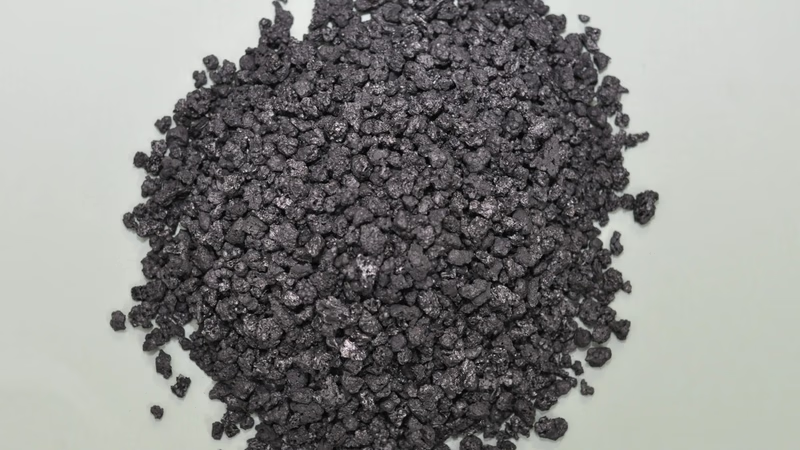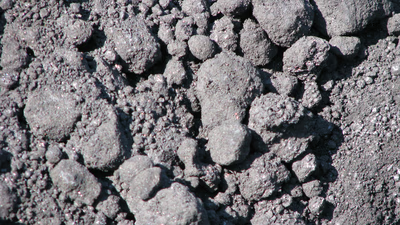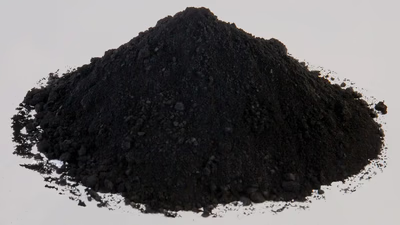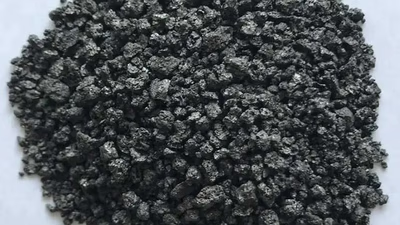
Petroleum coke as a fuel source in industrial applications.
Petroleum coke, commonly known as petcoke, is a carbon-rich solid material derived from oil refining. It is used as a fuel in various industries due to its high carbon content and energy density. However, its use comes with both advantages and disadvantages. Petcoke has a very high calorific value, typically ranging from 7,500 to 8,500 kcal/kg, which means it can generate a significant amount of heat when burned.
- **Efficiency**: This high energy content makes it an efficient fuel for industrial processes that require large amounts of heat, such as cement kilns and power plants.
Petcoke is often cheaper than other fossil fuels like coal or natural gas, making it an attractive option for industries looking to reduce fuel costs. As a byproduct of oil refining, petcoke is readily available, especially in regions with extensive refining operations. Besides being used as a fuel, petcoke is also utilized in the production of electrodes for the aluminum and steel industries, as well as in the manufacturing of certain chemicals. Petcoke can be blended with other fuels to improve their combustion efficiency and reduce costs.
Increasingly stringent environmental regulations may limit the use of petcoke as a fuel, requiring industries to seek cleaner alternatives or invest in costly emission control technologies. Public opposition to the use of petcoke due to its environmental and health impacts can lead to regulatory and social challenges for industries. The price of petroleum coke and many other minerals in general depends entirely on what grade and purity you need to use. The products of this company are both imported, from the countries in this industry and are available domestically, which are sent according to the quality you need. Therefore, before buying, it is better to specify the quality you need.
Petcoke advantages:
- High calorific value
- Low crushing index
- low volatile material
Petcoke disadvantages
- High levels of sulfur
- High levels of vanadium
There is no risk in your purchase if you are aware of the necessary features and characteristics when buying petroleum coke and also know how to use each one. On the other hand, carelessness in choosing and using a low quality product will lead to a waste of your capital and will reduce your work efficiency.
Since petcoke is a byproduct of oil refining, its supply is relatively stable and predictable, especially in regions with significant refining capacity. Burning petcoke releases a significant amount of carbon dioxide (CO₂), contributing to greenhouse gas emissions and climate change. The combustion of petcoke can produce harmful pollutants, including sulfur oxides (SOₓ), nitrogen oxides (NOₓ), and particulate matter, which can negatively impact air quality and public health.
Petcoke often contains high levels of sulfur, which can lead to the formation of sulfur dioxide (SO₂) during combustion. This can contribute to acid rain and respiratory problems. To mitigate sulfur emissions, industries must invest in desulfurization technologies, which can increase operational costs. Petcoke can produce a significant amount of ash when burned, which needs to be managed and disposed of properly. The ash and other residues can pose handling and storage challenges, requiring additional infrastructure and maintenance.
-

Petroleum coke (petcoke) is a carbon-rich solid derived from oil refining, widely used as fuel in various industries due to its high calorific value, which ranges from 7,500 to 8,500 kcal/kg. Its efficiency makes it suitable for processes requiring substantial heat, such as cement kilns and power plants. Petcoke is often more cost-effective than other fossil fuels like coal or natural gas, appealing to industries aiming to lower fuel expenses. Additionally, it serves in producing electrodes for aluminum and steel industries and can enhance the combustion efficiency of blended fuels. However, the use of petcoke presents challenges. Environmental regulations are tightening, potentially limiting its use and necessitating investments in emission control technologies. Public opposition arises from health and environmental concerns linked to petcoke combustion, which releases significant CO₂ and harmful pollutants like sulfur oxides and nitrogen oxides. These emissions can lead to air quality issues and contribute to climate change.
Furthermore, petcoke"s high sulfur content poses risks of acid rain formation and respiratory problems. Industries must also manage the ash produced during combustion, which requires additional infrastructure for proper disposal. Understanding the quality specifications of petcoke is crucial for effective utilization; poor choices can lead to inefficiencies and financial losses. "
-

Petroleum coke, with a carbon content of 85% to 95%, serves multiple industrial applications due to its high calorific value and efficiency as a fuel source. It is primarily utilized in steelmaking, aluminum smelting, and the production of carbon-based products. Calcined petroleum coke is particularly valuable for its electrical conductivity, making it essential for carbon and graphite electrodes in aluminum production. Additionally, petroleum coke is used in power generation and cement kilns, where its heat-generating properties are advantageous. The material can be categorized into raw (green) and calcined types; the latter is preferred for its lower sulfur and ash content. In the cement industry, petroleum coke"s sulfur content eliminates the need for additional sulfur in cement production. Furthermore, it acts as a carbon source in alloy industries and is involved in various high-temperature industrial processes. Its availability as a byproduct of petroleum refining makes it an economical choice for many sectors.
The ability to modify petroleum coke through calcination enhances its quality for specialized applications, while blending with other materials can optimize its properties. Overall, petroleum coke stands out as a cost-effective alternative to traditional fuels and carbon sources across diverse industries. "
-

Petroleum coke, or petcoke, is a carbon-rich solid produced during the oil refining process. It results from the thermal decomposition of heavy crude oil into lighter fractions like gasoline and diesel. Composed of 85% to 95% carbon, petcoke serves as a valuable fuel source for industrial applications requiring high heat. The production process involves coking, which converts heavy petroleum residues into gases, liquids, and solids with high carbon content. There are two main types of petroleum coke: calcined and fuel-grade. Calcined coke undergoes further processing to enhance purity and is primarily used in aluminum production and steelmaking. Fuel-grade coke is less pure and mainly utilized as fuel in power plants and cement kilns. The demand for petroleum coke is driven by increasing oil consumption and the need for efficient energy sources in various industries.
Its global trade involves bulk transportation, making it a significant commodity in the market. The physical properties of petcoke determine its applications across sectors such as energy generation, metal smelting, and cement manufacturing.
-

The largest producers of petroleum coke (petcoke) are primarily countries with significant oil refining capabilities, including the United States, China, India, Saudi Arabia, Brazil, Russia, Canada, and the European Union. Major oil companies such as ExxonMobil, Sinopec, and Saudi Aramco are key players in this sector. The U. S. leads in refining capacity and petcoke production due to its numerous refineries operated by companies like Chevron and BP. China’s industrial sector drives its high petcoke output through state-owned enterprises like Sinopec. India is rapidly expanding its refining capacity with Reliance Industries and Indian Oil Corporation as major contributors. Saudi Arabia"s vast oil reserves support substantial petcoke production primarily through Saudi Aramco.
While the Middle East has notable refining operations contributing to global petcoke supply, it does not lead in overall production compared to the U. S. , China, and India. The EU also plays a role in petcoke production with companies like Royal Dutch Shell involved in refining processes that yield petcoke as a byproduct. Other countries such as Brazil and Russia have well-established oil industries that contribute significantly to global petcoke output. "
-

Petroleum coke production in the Middle East is significantly influenced by the region"s oil refining capabilities, with major producers including Saudi Arabia, Iran, Iraq, Kuwait, and the UAE. The production rate varies based on oil output, refinery utilization, and market demand. Saudi Arabia leads with an estimated annual production of 5 to 10 million metric tons of petcoke, while Iran produces between 1 to 3 million metric tons. Kuwait also contributes significantly with similar production levels. The total petroleum coke output in the Middle East is estimated to range from 8 to 15 million metric tons annually. The aluminum industry is the largest consumer of petcoke globally, accounting for 76% of its usage. As demand for aluminum rises in the region, so does the need for petcoke. Modernization and expansion of refineries are expected to further boost production rates.
However, environmental regulations may pose challenges to production practices. "





